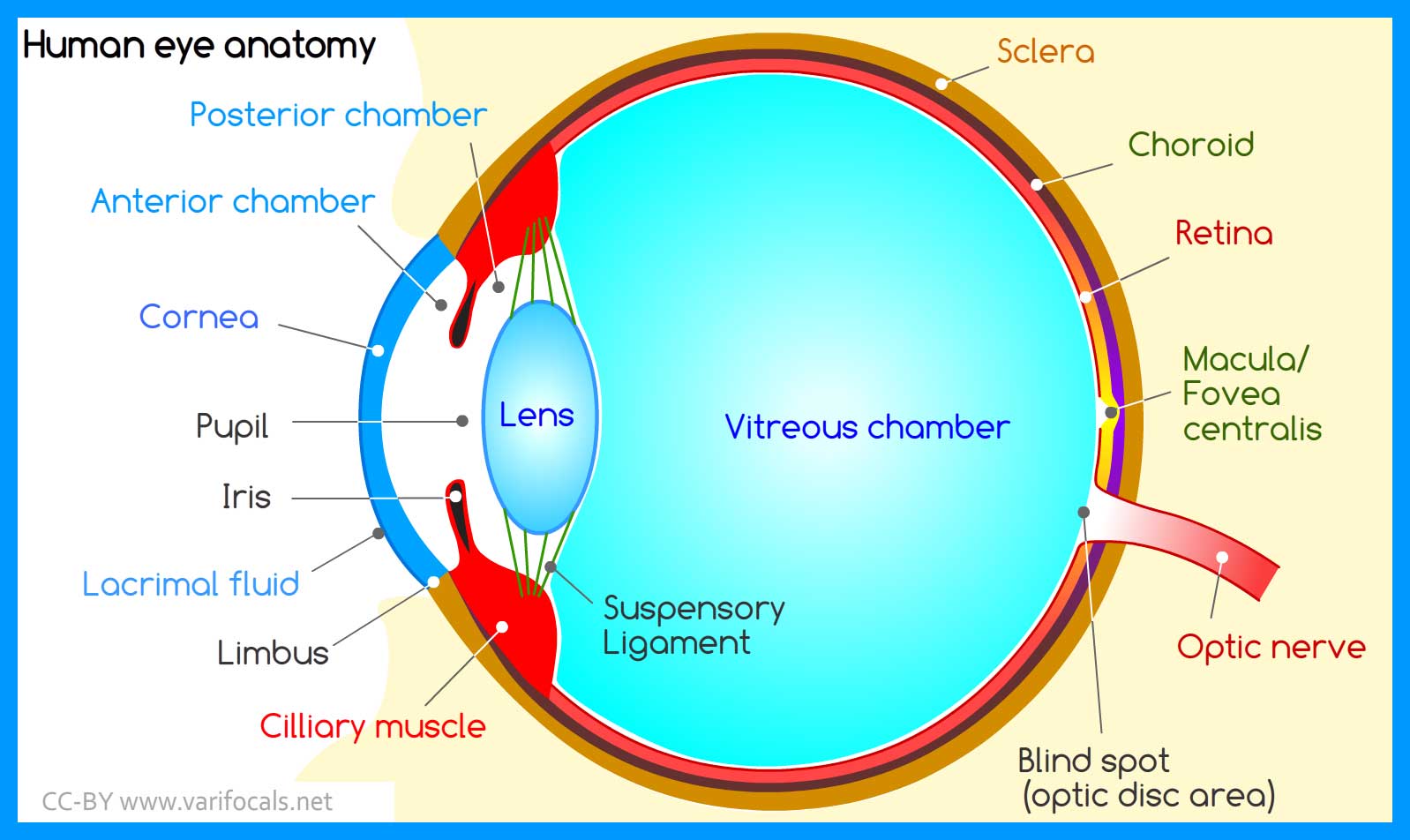Eye Anatomy

Diabetes Healthy ANATOMY and Eyes OF THE AND ITS FUNCTION Toolkit Parts of the Eye Vision is wonderful, but you could lose To understand it if you eye have problems, diabetes. it is helpful to know the different parts of the eye. Please refer to the back of this handout for descriptions of their functions. The main parts of the eye— Optic 3
File1413 Structure of the Eye.jpg Wikimedia Commons

The retina is the innermost layer lining the back of the eyeball and the light-sensitive part of the eye. The retina contains photoreceptors that detect light. These photoreceptors are known as cones and rods. Cones enable us to detect colours, while rods help us to see in poor light. The retina contains nerve cells that transmit signals from.
Human Eye Anatomy Parts of the Eye and Structure of the Human Eye

The structures and functions of the eyes are complex. Each eye constantly adjusts the amount of light it lets in, focuses on objects near and far, and produces continuous images that are instantly transmitted to the brain. The orbit is the bony cavity that contains the eyeball, muscles, nerves, and blood vessels, as well as the structures that.
Structure and Function of the Human Eye
/GettyImages-695204442-b9320f82932c49bcac765167b95f4af6.jpg)
1. Conjunctiva The conjunctiva is the membrane covering the sclera (white portion of your eye). The conjunctiva also covers the interior of your eyelids. Conjunctivitis, often known as pink eye, occurs when this thin membrane becomes inflamed or swollen. Other eye disorders that affect the conjunctiva include:
draw a neat and labelled diagram of structure of the human eye slwbyx77 Science

Iris. The colored part of the eye. The iris is partly responsible for regulating the amount of light permitted to enter the eye. Lens (also called crystalline lens). The transparent structure inside the eye that focuses light rays onto the retina. Lower eyelid. Skin that covers the lower part of the eyeball, including the cornea, when closed.
Diagram showing the different parts of the eye Parts of the eye, Eye health, Free homeschool

Labelling the eye. Use this interactive to label different parts of the human eye. Drag and drop the text labels onto the boxes next to the diagram. Selecting or hovering over a box will highlight each area in the diagram. The human eye has several structures that enable entering light energy to be converted to electrochemical energy.
eye anatomy Optometrist in Petaling Jaya Optical Shop Promotion Malaya Optical

Eye Diagram Handout Parts of the Eye To understand eye problems, it helps to know the different parts that make up the eye and the functions of these parts. Here are descriptions of some of the main parts of the eye: Cornea: The cornea is the clear outer part of the eye's focusing system located at the front of the eye.
Blind Spot Eye Anatomy ANATOMY

The iris controls widening and narrowing (dilation and constriction) of the pupil. Cornea: the transparent circular part of the front of the eyeball. It refracts the light entering the eye onto the lens, which then focuses it onto the retina. The cornea contains no blood vessels and is extremely sensitive to pain.
ARCHIVE FileAnatomy of the eye.jpg Comparative Physiology of Vision

Eyelid anatomy Lacrimal gland Eye muscles Eyeball Outer layer Middle layer Inner layer Blood supply of the eye Nerves of the eye Sources + Show all Bones of the orbit The bony orbit is made out of seven bones, which include the maxilla, zygomatic bone, frontal bone, ethmoid bone, lacrimal bone, sphenoid bone and palatine bone.
Can We Grow New Eyes?

Diagram of the Eye Posted in Eye Health, Uncategorized | August 5, 2018 Even though the eye is small, only about 1 inch in diameter, it serves a very important function - the sense of sight.
Anatomy of the Eye Human eye diagram, Eye anatomy diagram, Eye anatomy

6 min read Your eye is a slightly asymmetrical globe, about an inch in diameter. The front part (what you see in the mirror) includes: Iris: the colored part Cornea: a clear dome over the iris.
Internal Anatomy Of The Eye Labeled Life Educations

There are six extraocular muscles that attach to the outside of the eye from the bone in the eye's socket. These muscles work to rotate the eye, and move the eye up, down, and from side to side. When they work together, these muscles can move the eye in any direction. Medial Rectus (MR) - Moves the eye inward, towards the nose.
3 Anatomy Surrounding the Eye OpticianWorks Online Optician Training Human anatomy and

The iris (colored part) of the eye functions like the diaphragm of a camera, controlling the amount of light reaching the retina by automatically adjusting the size of the pupil (aperture). The eye's crystalline lens is located directly behind the pupil and further focuses light rays.
Eye Diagram Cliparts.co

Eye Pictures, Anatomy & Diagram | Body Maps Human body Head Eye Eye Eyes are approximately one inch in diameter. Pads of fat and the surrounding bones of the skull protect them. The eye.
Human eye Extraocular Muscles Britannica

Download. English: Parts of the Eye (PDF 603.5 KB) Spanish: Las partes del ojo (PDF 897.7 KB) Check out this fact sheet to see a labeled diagram of the eye and learn about the different parts of the eye.
Labeled Simple Labeled Human Eye Diagram

The eye is protected from mechanical injury by being enclosed in a socket, or orbit, which is made up of portions of several of the bones of the skull to form a four-sided pyramid, the apex of which points back into the head.